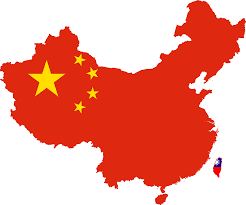A subtle undercurrent has taken hold in Asian markets, where the recent uptick in outbound shipments seems to have stirred both optimism and caution. Investors are finding themselves drawn into a dance between fragile trade truces and looming policy decisions, sensing that the outcome of this week’s pivotal economic readings could tip the balance in either direction.
China’s benchmark equity gauge edged forward on Monday as dealers digested evidence that exporters ramped up activity in June. The Shanghai Composite Index nudged higher, flirting with levels not seen since last October, while its blue-chip counterpart eked out a modest advance. Over in Hong Kong, the Hang Seng and its technology-focused sibling likewise added ground, their movements underpinned by the same revival in trade flows that has underwritten hopes of sustained momentum.
At the heart of the story is a 5.8% year-on-year surge in goods shipped abroad during the month, comfortably outstripping market forecasts. This unexpected climb was matched by a return to growth in imports, anchoring a snapshot of trade that analysts interpret as evidence of firms front-loading orders ahead of a potential resumption of higher levies due in August. That strategic positioning has injected a fresh pulse into the market, even as the spectre of new duties continues to hover.
With the nation’s second-quarter GDP figures due on Tuesday and consensus forecasts pointing to a 5.1 per cent expansion, the stakes could scarcely be higher. A figure in line with or above expectations would reinforce the narrative that Beijing remains on track to meet its annual growth objective, yet any sign of faltering could sharpen concerns about the economy’s underlying resilience. Investors are acutely aware that the Politburo’s forthcoming deliberations may well set the tone for the government’s willingness to deploy further stabilisation measures in the second half of the year.
Sector by sector, the market’s internal shifts offer their own clues. Financial shares led the advance, recouping part of last week’s retreat, while energy names also found support amid a tentative lift in commodity prices. By contrast, property-related equities slipped further from the highs reached on speculation of broad-based stimulus, underscoring scepticism that any forthcoming real-estate measures will amount to more than modest, demand-side tweaks. One global bank noted that while easing steps in the housing sector might afford some relief, they are unlikely to constitute the large-scale intervention that many had once anticipated.
Beyond China’s shores, the wider region displayed mixed fortunes, with a pan-Asian gauge barely budging and Japan’s leading index drifting lower. The undercurrent of tariff tension emanating from Washington continued to temper risk appetite, although many market participants privately question whether the aggressive rhetoric will translate into substantive policy shifts.
Against this backdrop, some of the most compelling narratives lie not in the headline numbers, but in the interplay of strategy and sentiment. Exporters have deftly seized upon the window afforded by a delicate truce, steering shipments to avoid what could otherwise be a significant uptick in trade costs. Portfolio managers, meanwhile, are weighing the merits of riding the wave of data-driven optimism against the possibility that any acceleration is transient. The lure of valuations that still appear reasonable relative to other major markets has been enough to keep some onside, even as others adopt a wait-and-see stance ahead of tomorrow’s GDP release.
Investor forums and research notes have underscored the importance of monitoring policy cues emanating from Beijing. Should the Politburo signal a readiness to roll out further tools to shore up activity, infrastructure lending, fiscal support or targeted credit measures—the current phase of cautious optimism could well gather fresh momentum. Conversely, a more muted policy communique might prompt a recalibration of risk positions, particularly among those who have been stretching valuations in anticipation of a robust second half.
In the meantime, China’s markets remain a study in contrasts: bolstered by a reinvigorated export engine yet wary of the external headwinds that persist. For patient investors, the careful assessment of the incoming data and official commentary will be crucial in determining whether the recent gains presage a sustained upswing or merely a pause in a longer-term consolidation.
Fidelity China Special Situations PLC (LON:FCSS), the UK’s largest China Investment Trust, capitalises on Fidelity’s extensive, locally-based analyst team to find attractive opportunities in a market too big to ignore.











































